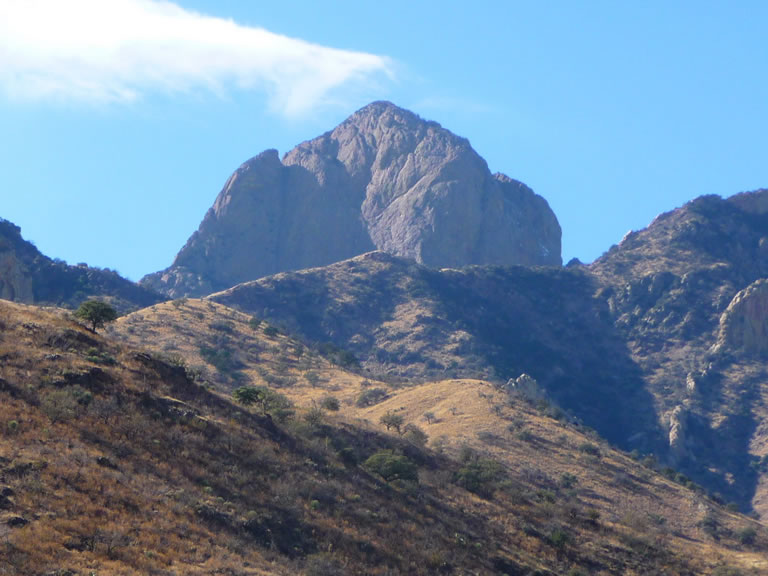While leading hikes at national wildlife refuges, we stress at the beginning that we probably will not see any animals, but we will likely see signs they leave – scat (feces), tracks, holes, feathers and fur, bones, etc.
Recently we joined Professor Walt Anderson from Prescott College and his environmental students who drove to Tucson to hike Brown’s Canyon, an area on Buenos Aires National Wildlife Refuge usually closed to the public. Leading the hike was Jack Childs, a jaguar expert who wrote Ambushed on the Jaguar Trail after his dog treed a jaguar in 1996 near this location that leads to Baboquivari, a prominent peak visible for miles.
[twocol_one]

[/twocol_one] [twocol_one_last]

[/twocol_one_last]
Signs
“We’ll see signs of animals,” Jack said as he began pointing out the usual indicators. Record low temperatures for the Tucson area would keep reptiles out of sight on this day, we knew, but many warm blooded critters still stirred in search of food. The first sign we investigated along the trail was a fresh dropping that ended in a point.
“That’s from a carnivore,” Jack said. “It’s probably from a gray fox.” Because identifying scat down to its species can be difficult, Jack’s extensive experience hiking this canyon allowed him an educated guess. “I first saw this canyon in 1965,” he later told me.

As we hiked, Jack pointed out animal signs along the way while Walt chimed in with his broad knowledge to give the students the benefit of two knowledgeable instructors, each with their unique perspective.
Stories
Passing by an ironwood, Walt pointed out the mistletoe attached to its branches. Mistletoe berries attract birds that eat them, he told the students. But to keep from lingering in their digestive system and destroying the seeds, the berries contain a laxative to help pass them through their systems quickly. Excreting them on the ground would do no good, he pointed out. “So they also contain a glue-like substance that holds the seeds onto the bird’s butt, causing an itching irritation.” When the bird lands in a tree, he scrapes his bottom on the branch, thus attaching the seeds to the tree. Such stories not only instructed, but also gripped the students’ attention while entertaining.
Farther down the trail, Jack pointed to scrape marks on the ground in front of a small pile of dirt. “Here’s where a bobcat marked its territory,” he said. He explained how the cat scrapes its hind feet, pushing the dirt into a tiny hill behind the depression, leaving behind its unique scent as it scratches. Jack invited the group to crouch and sniff the scraping to check out the odor.
[twocol_one]

[/twocol_one] [twocol_one_last]

[/twocol_one_last]

The next sign we encountered was a javelina skull. “The whole carcass was here last year when we did this hike,” Walt said. Picking up the skull, he pointed out the enlarged canine teeth, tools for digging and fighting that self-sharpen as the uppers meet the lowers. Javelina are an intimidating prey, not easily subdued.

Knowledge
All through the six-mile hike, Jack shared his knowledge of the flora and fauna, as well as the history of the area. Walt added his extensive knowledge, connecting with his students by delivering facts interspersed with stories and humor.
Although this hike proved educational, as well as enjoyable, for us the greatest reward in this day came through becoming acquainted with intelligent, caring young people who will work to protect wildlife and the environment for our future welfare.



